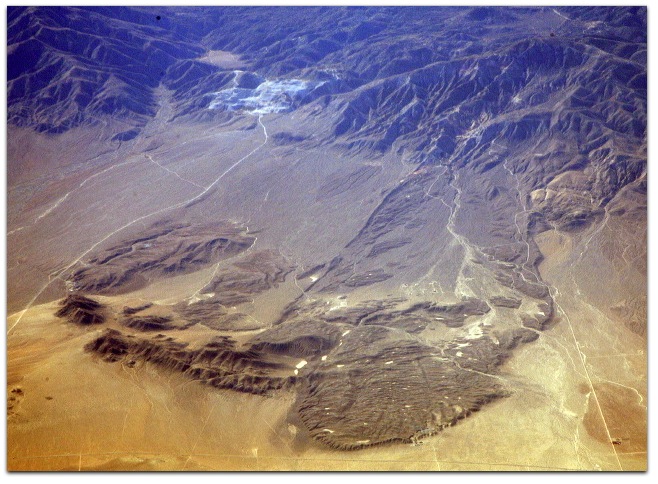One day, back around 15,000 BCE, half a mountain in Southern California broke loose and slid out onto what’s now the Mojave desert. The resulting landform is called the Blackhawk Slide. Here it is:
It’s that ripple-covered lobe on the bottom right. According to Robert Sharp’s Geology Underfoot in Southern California, it didn’t just flow off the mountain, as would happen with a typical landslide. It actually slid intact, like a toboggan, four and a half miles, on a slope of only two to three degrees. It could not have traveled so far, and have remained so intact (with rock layers preserved, in order, top to bottom), if it had merely flowed.
Geologists can tell it slid because it didn’t just heap at the base of the mountain from which it detached. Instead it soared, at low altitude, four and a half miles, on the flat, on a cushion of air, out across the desert, before plopping down.
To get some perspective on this, here are two facts to consider. First, we’re talking about ten billion cubic feet of detached mountain face here. Second, in order to travel that far out onto the desert, shattered but essentially in one piece, it had to glide on a cushion of air, at speeds up to 270 miles per hour. Or so goes the theory.
One wonders if humans were there to see it happen. Ancestors of native Americans were already on the continent by then, thanks to the last glacial maximum, which still had several thousand more years to go. There may have been some ice on the mountains themselves, and perhaps that helped weaken the rock, which was already raised to the sky by pressures on the San Andreas Fault, which lies on the back side of the San Bernardino Mountains, a couple dozen miles from here.
I came along a bit late, but was glad to get my first chance to gander at the slide, the day after Thanksgiving, on a United flight from San Jose to Houston. I was shooting against the sun, and it was a bit hazy, but I was still able to get a good look, and this photo set too.
Additional links:
- Ronald L. Shreve, Leakage and Fluidization in Air-Layer Lubricated Avalanches
- Frank Rodrigue, The Blackhawk Landslide

Leave a Reply